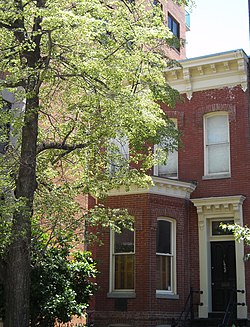
Dupont Circle is a historic roundabout park and neighborhood of Washington, D.C., located in Northwest D.C. The Dupont Circle neighborhood is bounded approximately by 16th Street NW to the east, 22nd Street NW to the west, M Street NW to the south, and Florida Avenue NW to the north. Much of the neighborhood is listed on the National Register of Historic Places. However, the local government Advisory Neighborhood Commission and the Dupont Circle Historic District have slightly different boundaries.
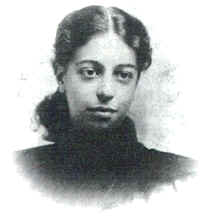
Angelina Weld Grimké was an African-American journalist, teacher, playwright, and poet.
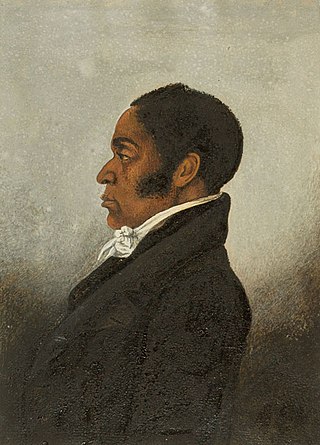
James Forten was an American abolitionist and businessman in Philadelphia, Pennsylvania. A free-born African American, he became a sailmaker after the American Revolutionary War. Following an apprenticeship, he became the foreman and bought the sail loft when his boss retired. Based on equipment he himself had developed, he established a highly profitable business. It was located on the busy waterfront of the Delaware River, in an area now called Penn's Landing.
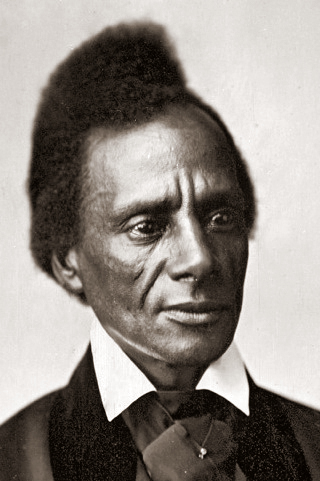
Charles Lenox Remond was an American orator, activist and abolitionist based in Massachusetts. He lectured against slavery across the Northeast, and in 1840 traveled to the British Isles on a tour with William Lloyd Garrison. During the American Civil War, he recruited blacks for the United States Colored Troops, helping staff the first two units sent from Massachusetts. From a large family of African-American entrepreneurs, he was the brother of Sarah Parker Remond, also a lecturer against slavery.
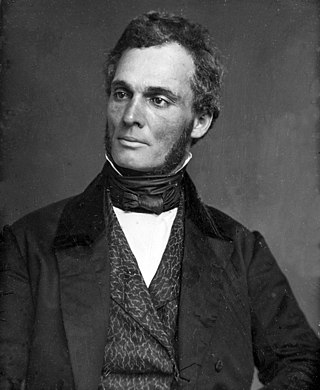
Robert Purvis was an American abolitionist in the United States. He was born in Charleston, South Carolina, and was likely educated at Amherst Academy, a secondary school in Amherst, Massachusetts. He spent most of his life in Philadelphia, Pennsylvania. In 1833 he helped found the American Anti-Slavery Society and the Library Company of Colored People. From 1845 to 1850 he served as president of the Pennsylvania Anti-Slavery Society and also traveled to Britain to gain support for the movement.
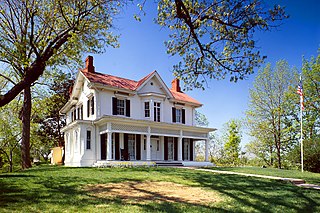
The Frederick Douglass National Historic Site, administered by the National Park Service, is located at 1411 W Street, SE, in Anacostia, a neighborhood east of the Anacostia River in Southeast Washington, D.C. United States. Established in 1988 as a National Historic Site, the site preserves the home and estate of Frederick Douglass, one of the most prominent African Americans of the 19th century. Douglass lived in this house, which he named Cedar Hill, from 1877–1878 until his death in 1895. Perched on a hilltop, the site offers a sweeping view of the U.S. Capitol and the Washington, D.C., skyline.
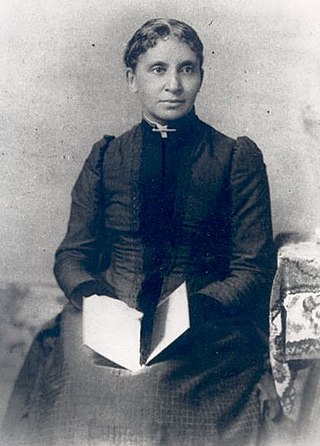
Charlotte Louise Bridges Forten Grimké was an African American anti-slavery activist, poet, and educator. She grew up in a prominent abolitionist family in Philadelphia. She taught school for years, including during the Civil War, to freedmen in South Carolina. Later in life she married Francis James Grimké, a Presbyterian minister who led a major church in Washington, DC, for decades. He was a nephew of the abolitionist Grimké sisters and was active in civil rights.

Archibald Henry Grimké was an African American lawyer, intellectual, journalist, diplomat and community leader in the 19th and early 20th centuries. He graduated from freedmen's schools, Lincoln University in Pennsylvania, and Harvard Law School and served as American Consul to the Dominican Republic from 1894 to 1898. He was an activist for rights for blacks, working in Boston and Washington, D.C. He was a national vice-president of the National Association for the Advancement of Colored People (NAACP), as well as president of its Washington, D.C. branch.

Francis James Grimké was an American Presbyterian minister in Washington, DC. He was regarded for more than half a century as one of the leading African-American clergy of his era and was prominent in working for equal rights. He was active in the Niagara Movement and helped found the National Association for the Advancement of Colored People (NAACP) in 1909.

The Cassey House is a historic house associated with the Cassey family, located at 243 Delancey Street in the Society Hill neighborhood of Philadelphia, Pennsylvania. It was owned by the Cassey family for 84 years, they were a prominent African-American family known for their philanthropy and work for the abolition of slavery, and their support for local educational, intellectual, and benevolent organizations.

Hayes Plantation, also known as Hayes Farm, is a historic plantation near Edenton, North Carolina that belonged to Samuel Johnston (1733–1816), who served as Governor of North Carolina from 1787 to 1789. Johnston became one of the state's first two United States Senators, serving from 1789 until 1793, and served later as a judge until retiring in 1803. Samuel Johnston died in 1816 at "the Hermitage," his home near Williamston in Martin County, N.C. The residence known as Hayes was completed by his son, James Cathcart Johnston, a year after Samuel's death. There are numerous other structures on the property, some predating the Hayes house itself, including the Hayes Gatehouse, which James Johnston lived in prior to the construction of the Hayes house.

The Mary Ann Shadd Cary House is a historic residence located at 1421 W Street, Northwest in Washington, D.C. From 1881 to 1885, it was the home of Mary Ann Shadd Cary (1823–93), a writer and abolitionist who was one of the first African American female journalists in North America, and who became one of the first black female lawyers after the American Civil War. The house was declared a National Historic Landmark on December 8, 1976, and was listed on the National Register of Historic Places. It also is a contributing property to the Greater U Street Historic District.
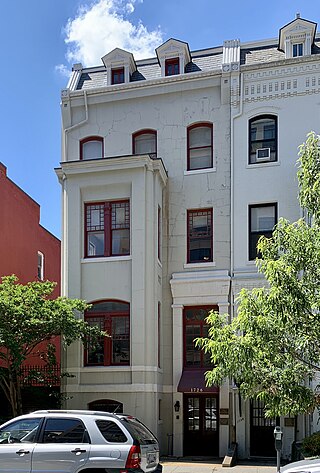
The Elliott Coues House is a historic house at 1726 N Street NW, in the Dupont Circle neighborhood of Washington, D.C. Built about 1880, it was the home of 19th-century historian and ornithologist Elliott Coues (1842–99) from about 1887 until his death. Coues helped found the American Ornithologists' Union in 1883 and edited about 15 volumes of journals, memoirs, and diaries by famous Western explorers and fur traders. The house was declared a National Historic Landmark in 1975.

The Mary Church Terrell House is a historic house at 326 T Street NW in Washington, D.C. It was a home of civil rights leader Mary Church Terrell (1863-1954), the first black woman to serve on an American school board, and a leading force in the desegregation of public accommodations in the nation's capital. Her home in the LeDroit Park section of Washington, DC was declared a National Historic Landmark in 1975. The building is a contributing property in the LeDroit Park Historic District.

The Sulgrave Club is a private women's club located at 1801 Massachusetts Avenue NW on the east side of Dupont Circle in Washington, D.C. The clubhouse is the former Beaux-Arts mansion on Embassy Row built for Herbert and Martha Blow Wadsworth and designed by noted architect George Cary. During World War I the Wadsworth House was used as the local headquarters for the American Red Cross.
Margaretta Forten was an African-American suffragist and abolitionist.

Harriet Forten Purvis was an African-American abolitionist and first generation suffragist. With her mother and sisters, she formed the first biracial women's abolitionist group, the Philadelphia Female Anti-Slavery Society. She hosted anti-slavery events at her home and with her husband Robert Purvis ran an Underground Railroad station. Robert and Harriet also founded the Gilbert Lyceum. She fought against segregation and for the right for blacks to vote after the Civil War.
Charlotte Vandine Forten (1785–1884) was an American abolitionist and matriarch of the Philadelphia Forten family.
Jane Clark Putnam was a prominent abolitionist in Boston. She came from a family considered to be part of the educated Black elite of the northern states. She was the wife of George Putnam and the mother of the noted educator Georgiana Frances Putnam.
